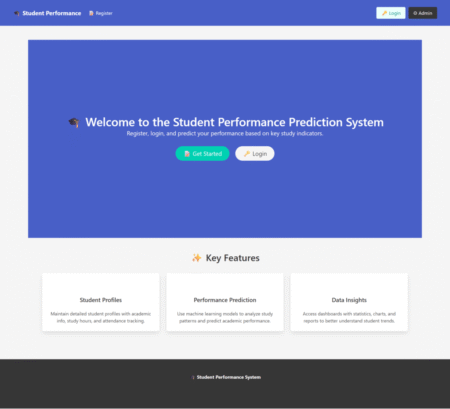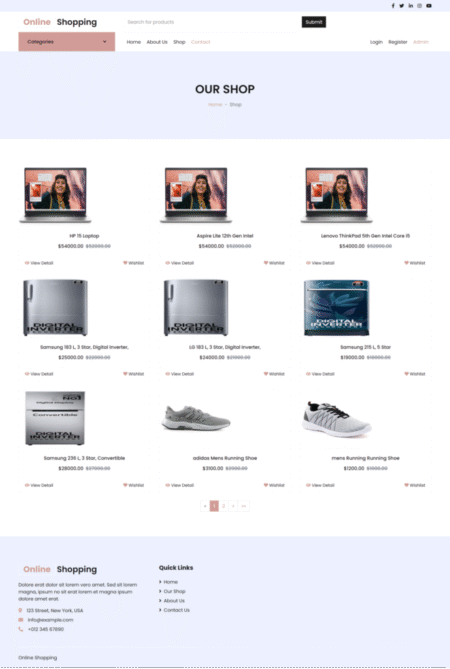 As React continues to evolve in 2025, so do the standards for writing modular, scalable, and maintainable frontends. Gone are the days when class components and prop drilling were the norm. Today, Modern React Design Patterns empower developers to build enterprise-grade apps with a focus on reusability, composability, and performance. In this blog, we’ll explore modern React patterns, how they solve real-world problems, and why adopting them matters more than ever.
As React continues to evolve in 2025, so do the standards for writing modular, scalable, and maintainable frontends. Gone are the days when class components and prop drilling were the norm. Today, Modern React Design Patterns empower developers to build enterprise-grade apps with a focus on reusability, composability, and performance. In this blog, we’ll explore modern React patterns, how they solve real-world problems, and why adopting them matters more than ever.
According to a Stack Overflow developer survey, React continues to be the most-used frontend framework, yet only a fraction of teams utilize the latest component patterns that truly enhance scalability.
1. Compound Component Pattern: Modular, Yet Flexible
Compound components allow for tightly-coupled UI pieces to communicate without prop drilling. Think of a custom tab component:
This pattern is useful for building cohesive UI blocks like accordions, tabs, dropdowns, etc. In 2025, compound components are often backed by the Context API, making them flexible and declarative.
2. Hook-Based State Management: Local Logic With Global Impact
Custom hooks have overtaken Redux in many scenarios. They promote separation of concerns and reduce boilerplate. Example:
Paired with context, hooks become powerful state containers that are scalable, testable, and team-friendly.
3. Render Props and Function-as-a-Child
Though less common than hooks, render props still shine for reusability.
These patterns are especially valuable when multiple components need to reuse complex logic like mouse tracking, file uploads, or animation triggers.
4. Context and Provider Trees: The Smart Layering Strategy
React’s Context API has matured significantly. But when misused, it can bloat your render cycles. Modern apps use context in smart, layered ways breaking them down by domain: AuthContext, ThemeContext, NotificationsContext, etc.
This creates clean separation while still allowing shared state across multiple components.
While scaling your frontend, choosing the right expertise is key. You can always Hire Frontend Developer from Inexture who understands the intricacies of these design patterns and delivers high-performance apps built for scale.
5. Atomic Design and Component Libraries
Atomic Design encourages building from the ground up, atoms (buttons), molecules (input groups), organisms (forms), templates, and pages.
Pair this with tools like Storybook or Chromatic, and you’ll get a scalable component-driven design system that teams can rely on.
Read more: Top React Libraries to Supercharge Your Development
6. Anti-Patterns to Avoid in 2025
Staying up-to-date isn’t just about using the latest tools it’s about knowing what not to do. Avoid these outdated approaches:
- Prop drilling over 3+ levels – use context or composition
- One massive global state – favor domain-specific states
- Unoptimized list rendering – use
React.memo,keyprops, and virtualized lists - Non-memoized callbacks inside render – wrap with
useCallback
These anti-patterns can slow down performance and complicate debugging.
7. Design Patterns Based on App Size
Here’s how to choose your React patterns depending on project scale:
| App Size | Suggested Patterns |
|---|---|
| Small (Landing) | Hooks, Stateless components |
| Medium (Dashboards) | Context, Atomic Design, Compound Components |
| Large (SaaS/ERP) | Render Props, Smart Context Layers, Lazy Imports |
This matrix helps tech leads and teams make consistent architectural decisions.
8. Real-World Use Case: Performance-Optimized Dashboard
Imagine a logistics dashboard showing live order tracking, delivery status, and analytics. With compound components for tabs, hooks for data fetching, and context for user sessions, you can build a UI that’s both reactive and clean.
Full guide: Top UX Research Methods for Budget-Smart Tactics
9. SEO, SSR, and the Future of React Patterns
Modern React patterns are no longer just about clean code they directly impact page performance, SEO, and maintainability. Frameworks like Next.js and Remix integrate SSR (Server-Side Rendering) with React best practices, making it essential to structure your components efficiently.
The future of React patterns includes:
- Server components
- Suspense for data fetching
- Middleware for conditional rendering
These additions will require every frontend engineer to rethink how they design UI logic.
Conclusion
Modern React Design Patterns in 2025 are all about balancing simplicity with scalability. Whether you’re building a startup MVP or an enterprise portal, following these patterns ensures better performance, maintainability, and developer experience.
Looking to integrate modern React architecture in your project? At Inexture Solutions, we help businesses build robust, scalable frontends using cutting-edge patterns and frameworks.
The post Modern React Design Patterns for 2025: Clean Code, Better Components appeared first on Inexture.
Source: Read MoreÂ




